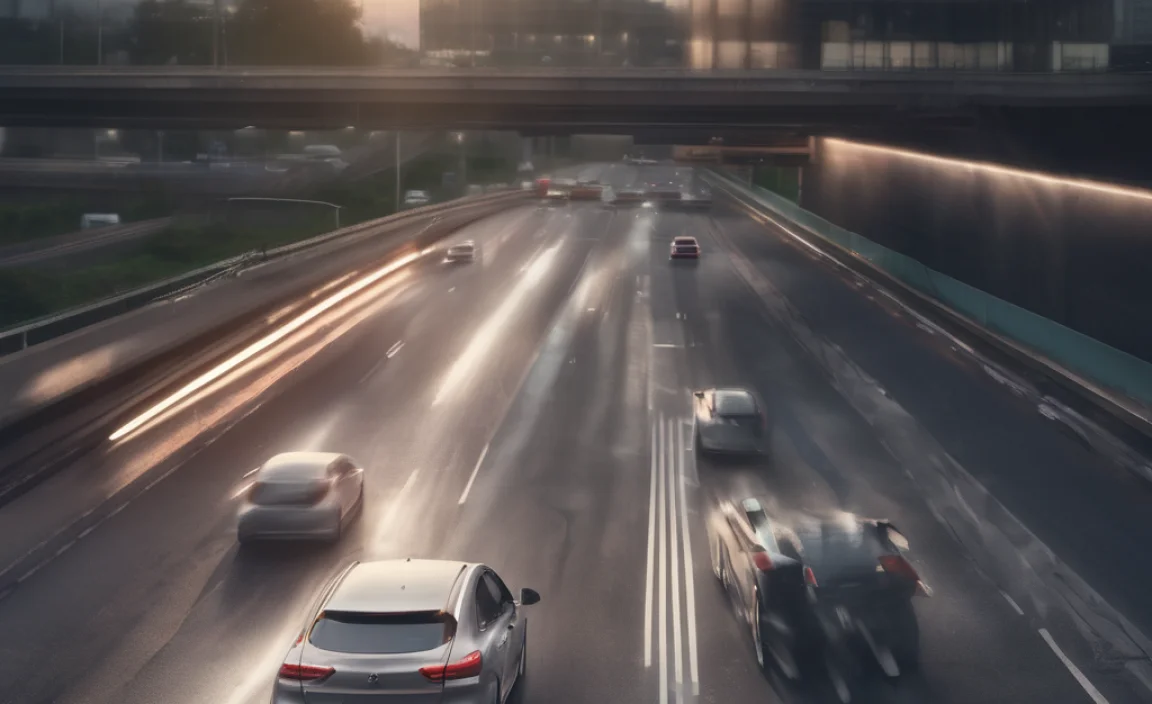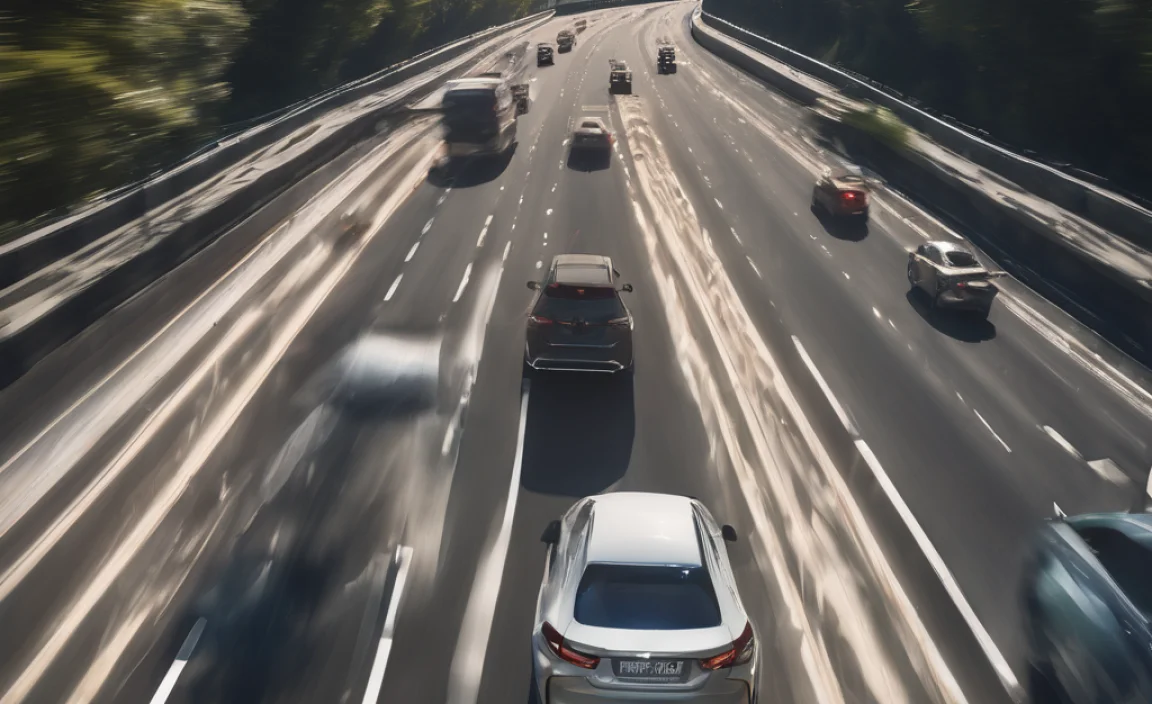GLA-Class Lane Assist: Essential Genius for Safer Driving
Your Mercedes-Benz GLA-Class comes equipped with advanced Lane Assist technology designed to keep you centered in your lane. This system uses cameras and sensors to detect lane markings, providing subtle steering corrections or warnings to prevent unintentional drifting. Understanding and utilizing these features enhances your driving safety and confidence on every journey.
Hey there, fellow Mercedes-Benz enthusiasts! Charlie Joyce here. Ever find yourself a little tired on a long drive, or perhaps momentarily distracted? It happens to the best of us. That’s where the magic of your GLA-Class’s Lane Assist system comes in. Think of it as a vigilant co-pilot, subtly helping you stay on the right path. It’s not about taking control away from you, but about adding an extra layer of safety that’s become essential in modern driving. We’ll break down exactly what it is, how it works, and how you can make the most of this brilliant feature. Get ready to feel more secure on the road!
Understanding GLA-Class Lane Assist: What is it?

The Lane Assist system in your Mercedes-Benz GLA-Class is part of a suite of advanced driver-assistance systems (ADAS) designed to make driving safer and less stressful. Its primary function is to prevent the vehicle from unintentionally drifting out of its lane. This is particularly useful on highways and long stretches of road where driver fatigue or inattention can lead to dangerous situations.
At its core, Lane Assist uses a sophisticated camera, usually mounted near the rearview mirror inside your car. This camera constantly monitors the road markings – solid or broken lines – to determine your car’s position within the lane. If the system detects that the vehicle is veering too close to a lane boundary without the turn signal being activated, it will intervene.
This intervention typically comes in two forms:
- Visual and Audible Warnings: The system will alert you that you are drifting out of your lane. This can be a warning light on your dashboard (often a steering wheel icon) and/or an audible chime.
- Active Steering Intervention: In many GLA-Class models, Lane Assist goes a step further and gently applies a counter-steering force to guide the vehicle back into the center of its lane. Note that this is a gentle nudge, not a sharp yank, designed to correct the drift without startling the driver.
It’s important to remember that Lane Assist is a supplementary system. It’s there to assist you, not replace your active driving. You are always in control of the vehicle, and your attention to the road is paramount.
How Does GLA-Class Lane Assist Work? The Technology Behind It

The intelligence behind your GLA-Class’s Lane Assist system lies in a combination of advanced sensors and a powerful control unit. Let’s dive into the tech:
1. The Forward-Facing Camera
The heart of the system is a small, unobtrusive camera mounted on the windshield, typically behind the rearview mirror. This camera acts as the “eyes” of the Lane Assist. It’s designed to:
- Identify Lane Markings: It can recognize various types of lane markings, including solid white and yellow lines, broken white and yellow lines, and even the edges of the road where markings are faint or absent.
- Process Visual Data: Sophisticated algorithms analyze the camera feed in real-time to detect the position of your vehicle relative to these markings and calculate its trajectory.
- Work in Various Conditions: While optimal performance is in good lighting and clear weather, modern cameras are designed to function in rain, fog, and at night, though visibility of markings can be reduced in extreme conditions.
2. The Electronic Control Unit (ECU)
This is the “brain” of the operation. The ECU receives the data from the camera and:
- Interprets Scenarios: It determines if the vehicle is drifting due to driver inattention or intention. It understands that if your turn signal is on, you intend to change lanes, and it won’t intervene.
- Calculates Corrections: If an unintentional lane departure is detected, the ECU calculates the precise amount of steering correction needed to bring the car back to the center.
- Communicates with Steering System: It sends signals to the electronic power steering system to apply the gentle counter-steering force.
3. The Electronic Power Steering (EPS) System
This is what makes the physical correction happen. When the ECU signals for intervention, the EPS system:
- Applies Torque: It subtly adds steering torque to the steering wheel, nudging it in the direction needed to correct the vehicle’s path.
- Responds to Driver Input: Crucially, if you firmly grip the steering wheel or actively steer the car, the Lane Assist intervention will be overridden. Your input always takes precedence.
4. Sensors for Vehicle Dynamics
While the camera is primary, the ECU also takes into account other vehicle data, such as speed and yaw rate (how fast the car is rotating around its vertical axis), to ensure the system operates safely and effectively. For example, Lane Assist typically only activates above a certain speed threshold (usually around 40 mph or 60 km/h).
This integrated approach ensures that Lane Assist provides a helpful, but never intrusive, layer of safety. It’s a testament to Mercedes-Benz’s commitment to intelligent vehicle design.
Activating and Adjusting Your GLA-Class Lane Assist

Getting the most out of your Lane Assist system starts with knowing how to turn it on and customize its settings. Most GLA models feature these controls conveniently located on the steering wheel, often on the left side.
Enabling Lane Assist
The process for activating Lane Assist is straightforward:
- Start Your Engine: Ensure your vehicle is running.
- Locate the Controls: On the multifunction steering wheel, you’ll typically find a button with an icon of a car veering between two lines, or a steering wheel with lines. This is the Lane Lane Keeping Assist button.
- Press the Button: Press this button once to activate the system.
- Confirm Activation: A indicator lamp on the instrument cluster will illuminate, usually showing a steering wheel icon within two parallel red lines. This confirms that Lane Assist is active and ready. In some models, you might also see it appear in the central infotainment display.
Disabling Lane Assist
For safety reasons, you can disable the system at any time:
- Press and Hold: Press and hold the same Lane Assist button on your steering wheel.
- Confirmation: The indicator lamp on the instrument cluster will turn off, signifying that the system is now deactivated.
Pro Tip: Lane Assist typically deactivates automatically each time you switch off the ignition. You’ll need to re-enable it each time you start your journey, which is a safety feature to ensure you’re consciously choosing to use it.
Adjusting Lane Assist Settings (If Available)
Some GLA-Class models allow for customization of Lane Assist behavior, often found within the vehicle’s infotainment system under “Driver Assistance” or “Vehicle Settings.” Common adjustable parameters include:
- Sensitivity: You might be able to choose how aggressively the system intervenes. Options could range from a more sensitive, early intervention to a less sensitive, later intervention.
- Warning Method: Some systems allow you to choose between a visual warning, an audible warning, or both.
Refer to your specific GLA-Class owner’s manual for the exact location and available options for customizing Lane Assist settings. It’s always best to consult your manual for model-specific details.
Understanding Lane Lane Keeping Assist vs. Lane Change Assist

It’s easy to confuse different lane-related assistance systems. While both aim to improve your driving experience, they do different things. Your GLA-Class might have one or both.
Lane Lane Keeping Assist (the ‘Assist’ we are discussing)
As we’ve covered, this system is activated via the steering wheel button with the car and lines icon. Its purpose is to:
- Prevent unintentional drifting: It intervenes with steering and/or warnings when you stray out of your lane without signaling.
- Operates within a single lane: Its focus is on keeping you centered between the lane markings currently detected.
Lane Change Assist (often part of active cruise control or a separate option)
This system is usually a separate feature and functions differently. It’s designed to assist with lane changes and often works in conjunction with other systems like Active Distance Assist DISTRONIC (Mercedes-Benz’s adaptive cruise control).
- Assists during lane changes: When driving on a multi-lane highway and using your turn signal to change lanes, Lane Change Assist can help steer the vehicle into the desired lane, provided the surrounding traffic conditions are deemed safe by the system.
- Requires explicit driver initiation: You must activate your turn signal for this system to be considered.
- Sensor dependency: It relies on more sophisticated sensors, including radar and often blind-spot monitoring, to assess the traffic situation around you.
Key Distinction: Lane Lane Keeping Assist is about staying within your current lane, while Lane Change Assist is about helping you move to an adjacent lane when you signal. Always ensure you understand which system your GLA-Class is equipped with and how it operates.
When Lane Lane Keeping Assist Works Best (and When it Doesn’t)

Like any advanced technology, your GLA-Class’s Lane Assist system performs optimally under certain conditions. Understanding these will help you rely on it appropriately.
Ideal Conditions for Lane Assist
- Clear Lane Markings: The system functions best when lane markings are crisp, clear, and visible. This includes solid white or yellow lines, and distinct broken lines.
- Good Lighting: Daylight driving provides the best visibility for the camera.
- Dry Weather: Rain and snow can obscure lane markings, making it harder for the camera to detect them accurately.
- Straight Roads and Gentle Curves: The system is designed to handle typical road geometries.
- Vehicle Speed: Lane Assist typically activates and operates effectively within a specific speed range, usually above approximately 40 mph (60 km/h) and below highway speeds in some configurations. Your owner’s manual will specify the exact range for your vehicle.
When Lane Assist Might Struggle
- Faded or Missing Lane Markings: On roads with worn-out lines, construction zones, or unpaved surfaces, the system may not be able to detect lane boundaries.
- Poor Weather Conditions: Heavy rain, snow, fog, or even bright sun glare directly into the camera can impair its vision.
- Sharp or Complex Curves: Extremely tight turns or rapidly changing road geometry can sometimes confuse the system.
- Road Construction: Temporary lane markings, cones, or shifting traffic patterns can be challenging for the system to interpret correctly.
- Driving Too Close to Markings: If you are intentionally driving very close to the lane line, the system might disengage or provide warnings.
- Engine or Tire Issues: While rare, significant vehicle vibrations or uneven tire wear could potentially affect sensor readings, though this is less common for Lane Assist’s primary function.
Remember: Lane Assist is a supplementary system. It’s always your responsibility to maintain full attention to the road and drive safely, regardless of whether the system is active. Always consult the official National Highway Traffic Safety Administration (NHTSA) guidelines on driver assistance technologies for broader safety information.
GLA-Class Lane Assist: Safety and Usage Tips
To ensure you get the most benefit from your GLA-Class’s Lane Assist system while prioritizing safety, keep these tips in mind:
Best Practices
- Read Your Owner’s Manual: This is the most critical step. Your manual provides specific details about how Lane Assist works in your particular GLA model, its limitations, and how to operate it.
- Always Stay Alert: Treat Lane Assist as a helper, not an autopilot. Your hands should remain on the steering wheel, and your eyes on the road.
- Understand the Warnings: Familiarize yourself with what the dashboard warning lights and audible chimes mean. React promptly to them.
- Test in Safe Conditions: Before relying on it during a long trip, try activating and observing the system on familiar, safe roads with clear markings.
- Be Aware of its Limitations: Know when the system might not work optimally (e.g., poor weather, construction zones) and be extra vigilant during these times.
- Firm Grip is Key: If you feel the system intervening, a firm grip on the steering wheel or a slight steering input will take over control.
- Turn Signal is Your Friend: Always use your turn signal when you intend to change lanes. This tells the system you are in control and planning a maneuver.
When Not to Rely Solely on Lane Assist
- Heavy Traffic: Lane changes are more frequent and can be unpredictable.
- Complex Interchanges or Roundabouts: These areas often have confusing road markings and traffic flow.
- Narrow Roads with No Shoulder: The margin for error is slim.
- Unknown or Poorly Maintained Roads: Where lane markings are inconsistent or absent.
- When Feeling Fatigued or Distracted: While Lane Assist can help, it’s not a substitute for being fully awake and focused.
Maintenance Considerations
The primary component for Lane Assist is the forward-facing camera. To ensure optimal performance:
- Keep the Windshield Clean: Dirt, smudges, or cracks in the area around the camera can obstruct its view. Regularly clean your windshield.
- Avoid Unauthorized Windshield Replacements: If your windshield needs replacement, ensure it’s done by a reputable shop that uses OEM-quality glass and correctly calibrates the camera afterward. Incorrect installation or calibration can render the Lane Assist system (and other camera-dependent safety features) ineffective or inaccurate.
By following these guidelines, you can integrate Lane Assist into your driving routine in a way that enhances safety and peace of mind.
Troubleshooting Common Lane Assist Issues
While Lane Assist is a reliable system, you might occasionally encounter issues. Here are some common problems and how to address them:
Issue 1: Lane Assist Not Activating
Possible Causes:
- System is Off: You may have forgotten to activate it via the steering wheel button.
- Speed Too Low: The system typically requires a minimum speed (e.g., 40 mph / 60 km/h) to engage.
- Conditions Met: Poor visibility (rain, fog, night), faded markings, or construction zones can prevent activation.
- Windshield Obstruction: Dirt, stickers, or damage near the camera.
- System Fault: A rare electronic issue.
Solutions:
- Ensure you are pressing the correct button and the indicator light appears.
- Check your speed.
- Move to an area with clearer markings and conditions.
- Clean your windshield thoroughly, especially around the camera area.
- If the problem persists across multiple drives in good conditions, consult your Mercedes-Benz dealer.
Issue 2: Lane Assist Intervening Too Aggressively or Not Enough
Possible Causes:
- Sensitivity Settings: If your model allows sensitivity adjustment, it might be set incorrectly.
- Road Conditions: Very narrow lanes or road edges might be misinterpreted.
- System Calibration: The system might need recalibration after a windshield replacement or other work.
Solutions:
- Adjust sensitivity settings via the infotainment system if available.
- Be aware that the system is designed for standard European/US road conditions.
- If intervention feels consistently wrong or unsafe, seek professional calibration from a Mercedes-Benz certified technician.
Issue 3: Warning Lights and Error Messages
Possible Causes:
- Temporary Sensor Issue: Often caused by extreme weather (heavy snow, intense sun glare) temporarily blocking the camera’s view.
- Component Failure: In rare cases, the camera or ECU might have a fault.
- Recent Repair Work: If the system hasn’t been recalibrated after a windshield replacement.
Solutions:
- Try turning the vehicle off and on again after a short period, especially if the weather has improved.
- If a persistent error message appears (e.g., “Lane Keeping Assist Unavailable”), it indicates a more significant issue. Visit your Mercedes-Benz dealer for diagnosis.
- Ensure any recent windshield replacements were followed by proper camera calibration. For more information on ADAS calibration, you can refer to resources like Auto Care Association’s ADAS resources.
Important Note: For any persistent issues or error messages, it is always safest to consult your authorized Mercedes-Benz